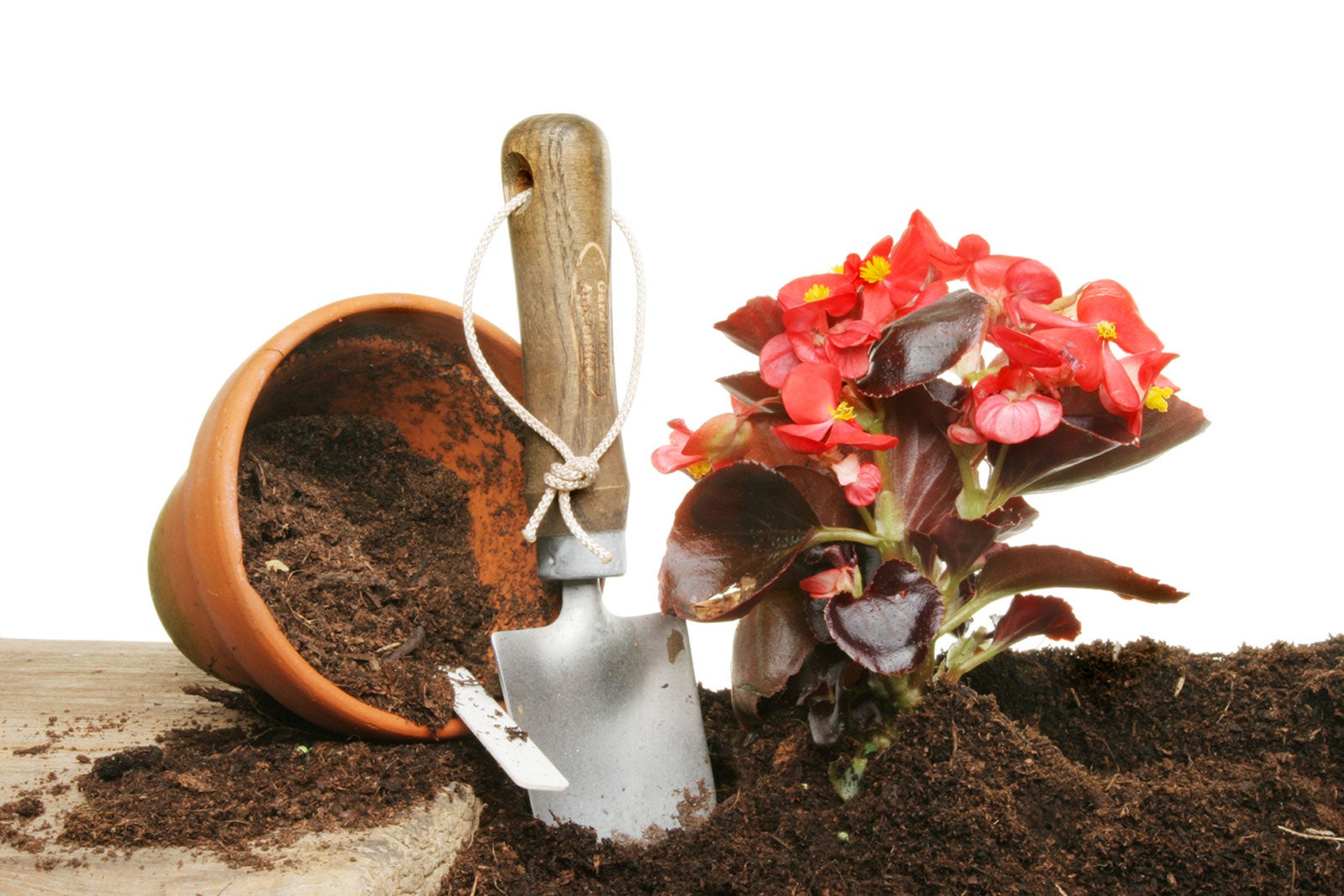Repotting Begonias: Tips For Moving Begonia To A Bigger Pot

There are more than 1,000 species of begonias worldwide, each with a varying bloom color or foliage type. Since there is such a great variety, begonias are a popular plant to grow. But, how do you know when to repot a begonia?
Moving a begonia to a bigger pot isn’t always an easy decision, since begonias like to be somewhat root bound. Repotting begonias at some point is necessary to boost soil nutrients and aerate the soil, making begonia transplants healthier.
When to Repot a Begonia
Since begonias like to be root bound, wait to repot until the container is filled with roots. This will be clearly obvious if you gently remove the plant from its pot. If there is still loose soil, allow the begonia to continue growing. When the plant’s roots hold all of the soil, it’s time for a transplant.
A begonia transplant may not always need a larger container. Sometimes a begonia may wither and fall over. This means the roots have begun to decay, and there is too much soil providing a surplus of nutrients (and water), more than the plant needs. In this case, you won’t be moving the begonia to a bigger pot, but rather a smaller one.
Now that you know when to repot begonias, it’s time to learn how to repot a begonia.
How to Repot a Begonia
When moving begonia to a bigger pot, select a slightly larger pot for the transplant. Slightly means to choose a pot that is an inch (2.5 cm.) larger than its previous pot. It is better to gradually increase the size of the pot as the plant grows, rather than plunking it into a huge container, which can lead to root rot.
Before repotting at all, make sure the plant has a solid root structure. Choose a pot with adequate drainage holes.
Gardening tips, videos, info and more delivered right to your inbox!
Sign up for the Gardening Know How newsletter today and receive a free copy of our e-book "How to Grow Delicious Tomatoes".
Use a soilless planting medium that is equal parts peat moss, vermiculite, and perlite. Amend the medium with a couple of tablespoons of ground limestone to help control humidity. Mix together well and moisten with water.
Gently remove the begonia from its container and immediately transplant it into the new medium. Water the begonia transplant and acclimate it in an area out of direct sun.

Amy Grant has been gardening for 30 years and writing for 15. A professional chef and caterer, Amy's area of expertise is culinary gardening.
-
 Looking For Plants To Give You The Soft And Fuzzies? Try These 5 Fuzzy Leaf Plant Options
Looking For Plants To Give You The Soft And Fuzzies? Try These 5 Fuzzy Leaf Plant OptionsLovers of texture, drama, silver foliage and tactile plants will adore these special sensory garden additions. These fuzzy leaf plant options will leave you all aglow
By Susan Albert
-
 Get Ready For A Summer Of Hummers! Grow These Full Sun Hummingbird Plants and Flowers
Get Ready For A Summer Of Hummers! Grow These Full Sun Hummingbird Plants and FlowersIf you’re lucky enough to enjoy a sunny backyard, make sure you are maxing out on your pollinator opportunities and grow these full sun hummingbird plants and flowers
By Tonya Barnett